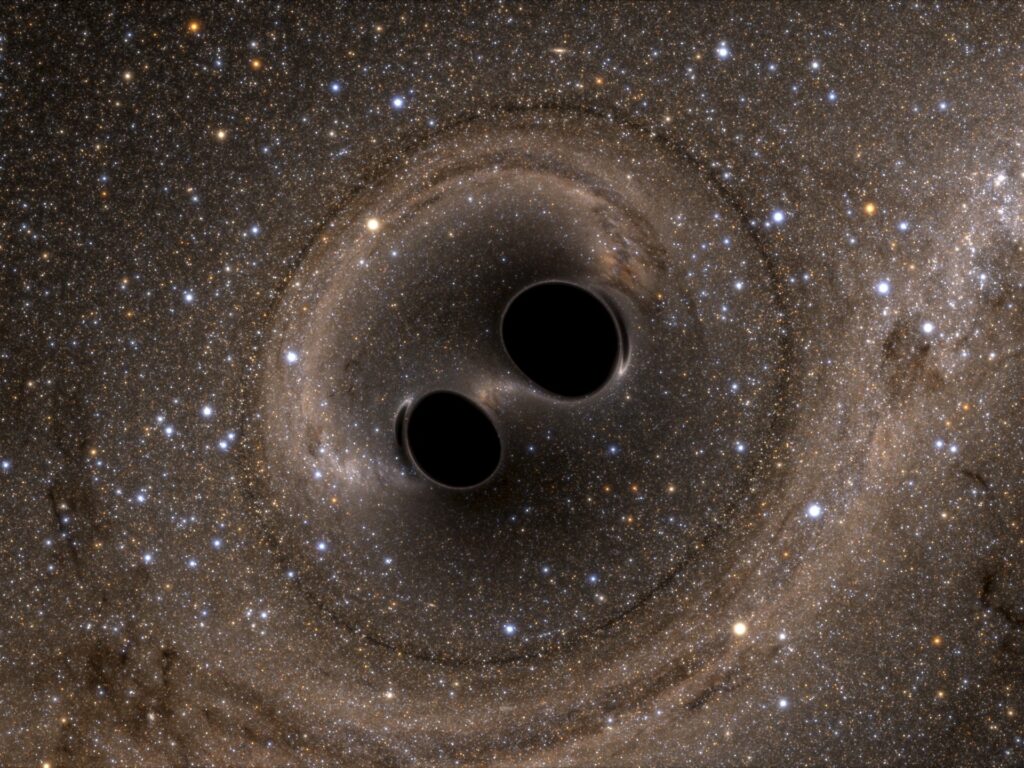
Scientists in the United States have made a groundbreaking discovery with the detection of the largest-known merger of two black holes. Using gravitational wave detectors, this monumental event was recorded in November 2023 and the findings were recently presented at the International Conference on General Relativity and Gravitation in Glasgow, United Kingdom.
The collision, which generated a gravitational wave, was observed on November 23, 2023, just before 13:00 GMT. This event was detected simultaneously by two detectors located in Washington State and Louisiana. These detectors are part of the Laser Interferometer Gravitational-Wave Observatory (LIGO), which is a component of the LIGO-Virgo-KAGRA (LVK) network.
Understanding Black Holes
Black holes are cosmic phenomena that consist of a massive concentration of matter packed into a relatively small space. This creates a gravitational force so strong that nothing, not even light, can escape it. Due to their nature, black holes are invisible, and their internal composition remains a mystery. They are believed to form when giant stars collapse at the end of their life cycle, having exhausted the energy required to sustain fusion reactions.
Observing the Collision
The gravitational wave resulting from the collision, named GW231123, was detected for a brief 0.1 seconds. LIGO, funded by the US National Science Foundation and developed by Caltech and MIT scientists, uses highly sensitive laser interferometers to detect such waves. As black holes are completely dark, their collisions are observed through the gravitational waves they emit. To date, approximately 300 black holes have been detected using this method.
Virgo, operated by the European Gravitational Observatory, and KAGRA, managed by Japan’s Ministry of Education, Culture, Sports, Science and Technology (MEXT), are similar interferometers contributing to these observations.
Implications of the Collision
When black holes collide, they merge to form a larger black hole. In this instance, the two black holes involved were about 100 and 140 times the mass of the Sun, respectively. The resulting black hole was over 265 times the mass of the Sun, surpassing the previous record set by GW190521, which was about 140 times the mass of the Sun and observed on May 21, 2019.
Scientific Revelations
The discovery has provided new insights into black hole mergers. “It increases our confidence that black holes can go through a series of successive mergers, to produce much more massive black holes,” said Mark Hannam, a professor at Cardiff University and member of the LIGO Scientific Collaboration.
“We think it’s unlikely that black holes that massive form out of dying stars, so the previous-merger explanation is currently considered the most likely explanation,” Hannam added.
Impact on Earth
Despite the magnitude of this cosmic event, there is no impact on Earth or the Milky Way galaxy. The black hole merger detected occurred between a few million light years and 10 billion light years away, meaning the event took place millions of years ago. A light year is the distance light travels in one year, and gravitational waves travel at the speed of light.
Hannam explained, “The distance of the merger can also be written as about 3 gigaparsecs. A parsec is about 31 trillion km, so converting the distance into kilometres produces numbers that don’t really have everyday names!”
This discovery not only pushes the boundaries of our understanding of black holes but also opens new avenues for research into the dynamics of these enigmatic cosmic entities. As scientists continue to analyze the data, the implications of such massive mergers may provide further clues into the life cycles of black holes and the evolution of the universe.





